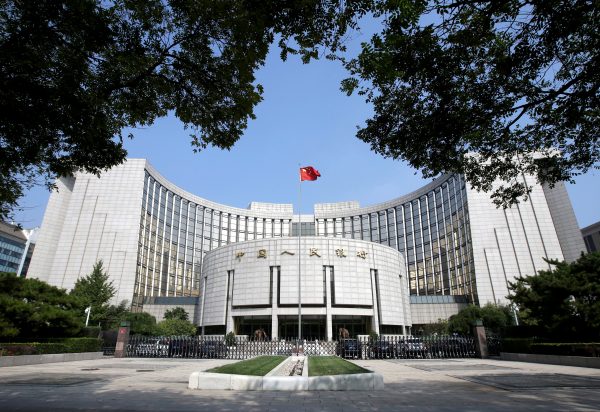The conventional finance–growth nexus suggests that a well-functioning financial system is necessary to finance investments and support economic growth. This pattern is seen in the United States, United Kingdom, Germany and Japan. The United States and the United Kingdom showcase a market-based model and Germany and Japan a bank-based model.
China does not fit into either model. While its banking system is dominated by the big four state-owned banks, its stock market did not open until the 1990s. Financing sources alternative to formal institutions, markets and banks have played critical roles in funding the private sector that drives economic growth.
Although financial reform is incomplete and slow in the context of China’s broader transition from a state-planned economy to a market-oriented economy, financial reform has come a long way. Between 1950 and 1978, China’s financial system consisted of a single bank — the People’s Bank of China (PBOC). The PBOC was a central government-owned and controlled bank under the Ministry of Finance. It served as both a central and commercial bank, controlling about 93 per cent of total national financial assets and handling almost all financial transactions.
The first wave of structural change occurred between 1978 and 1984. The PBOC departed from the Finance Ministry and became a separate entity. Four state-owned banks were established to acquire the PBOC’s commercial banking businesses: the Bank of China, Industrial and Commercial Bank of China, People’s Construction Bank of China and Agricultural Bank of China. Partially local government-owned regional banks, rural credit cooperatives, urban credit cooperatives and non-bank financial intermediaries also proliferated during the 1980s.
The 1990s saw the establishment and rapid growth of the Shanghai Stock Exchange and Shenzhen Stock Exchange. Institutional investors such as mutual funds also emerged in this period. Competition from foreign financial institutions increased after China entered the World Trade Organization in 2001.
In the past two decades, numerous legal, institutional and regulatory bodies were established to improve the efficiency of banks and markets. The dominance of the big four banks in the banking system has been significantly reduced and banking sophistication improved. In contrast to preferential credit allocation to state-owned enterprises (SOEs), banks now use an internal credit rating system and align loan officers’ incentives with compensation and bonus schemes related to risk management.
Waves of systematic efforts, through capital rejection or debt restructuring, have been taken to address non-performing loan issues. The small and medium enterprises and growth enterprises market boards were introduced to the stock exchange to improve the market’s funding function. There’s also been substantial progress in internationalising the market with the Shanghai–Hong Kong Connect, the Shenzhen–Hong Kong Connect and the Shanghai–London Connect. These investment channels improve cross-border capital flows while capital controls are still in place. The bond market has also grown in recent years.
But the transition is slow and incomplete. State allocation through the banking system remains politically rather than economically determined. Not only does it distort allocation between the state and private sector, it also distorts the allocation between the real production sector and real estate market.
System reform and economic growth are endogenous. It is unclear whether financial reform has led to economic growth or reacted to economic development. It is also unclear whether this financial development has been sufficient so as not to impede economic growth.
Substantial inefficiency remains in the banking sector such as high overhead costs. Proxies for the formal financial system, such as the banking system and capital markets, have little effect on regional industrial agglomeration. Shadow banking played a positive role in financing entrepreneurial activities that constrained access to finance in the 1980s. But the government’s massive 2009 stimulus to rescue the export sector led to a dramatic expansion in new types of shadow banking with less positive outcomes.
The performance of domestically-listed firms has also been poor relative to firms in large developed and emerging markets as well as externally listed and matched unlisted Chinese firms. Deficiencies in the market’s institutional features, such as initial public offerings, delisting mechanisms and corporate governance, also partially contribute to problems.
Alternative financing channels and governance mechanisms have played a critical role in promoting growth in the Chinese economy. Funding sources come from family, relatives, informal lending agents and retained earnings. These financing channels rely on relationships and reputations for information, pricing, monitoring and resolving conflicts.
Compared to other major emerging economies such as Brazil and Indonesia, China is not an outlier but average in using these alternative financing channels. More research is needed to understand the Chinese experience and determine whether similar mechanisms are behind the growth of other economies. Recent fintech developments also contribute to the Chinese financing system, such as crowdfunding, peer-to-peer networks for entrepreneurs and Alipay and Wechat pay for retail transactions.
Despite continued regulative and financial reform, the development of China’s financial system and overall economic growth still do not converge towards those systems found in the West in spite of the conventional wisdom. Adopting the US system may not be optimal.
It may be best for China to develop its own financial system, instead of simply adopting one. This experimental approach is reflected in many of China’s current finance reform policies.
Meijun Qian is Professor at the Research School of Finance, Actuarial Studies and Statistics (RSFAS), The Australian National University.

